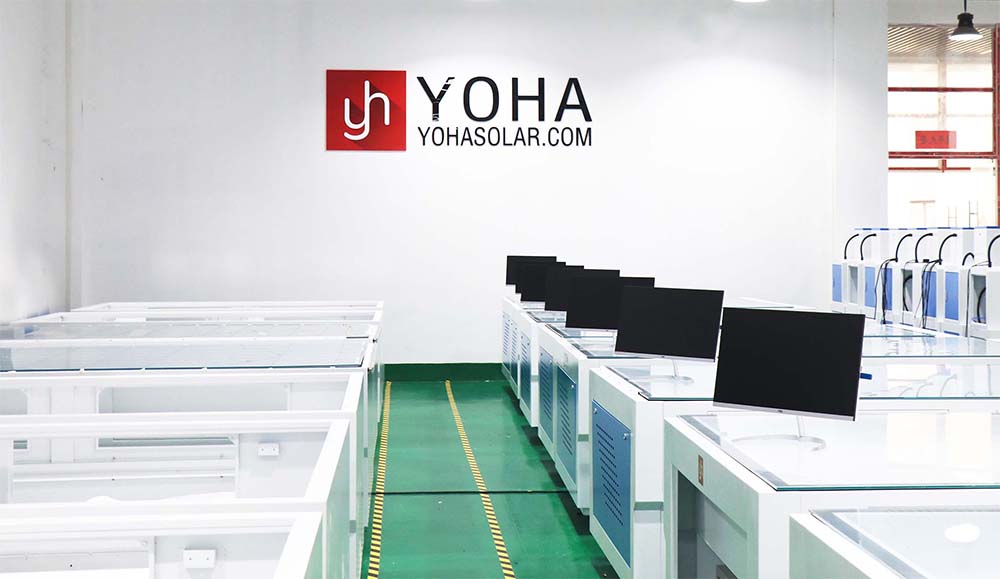The rapid development of the photovoltaic industry relies heavily on stringent quality control, with PV testing equipment serving as the lifeline throughout the entire industrial chain. From raw material screening to final power plant operation and maintenance, diversified PV testing equipment forms a comprehensive quality monitoring network, ensuring the efficiency and reliability of photovoltaic products.
Material and Cell Testing Equipment
-
Minority Carrier Lifetime Tester: A core device for evaluating silicon material quality, it precisely measures carrier lifetime through photoconductance decay or microwave photoconductance decay methods, directly impacting final cell efficiency.
-
Optoelectronic Performance Testing Equipment:
- Solar Simulator & IV Tester: Accurately simulates standard illumination conditions (AM1.5G) and automatically measures the current-voltage (IV) characteristic curve of cells, outputting key parameters such as open-circuit voltage, short-circuit current, fill factor, and conversion efficiency.
- Quantum Efficiency Testing System: Measures a cell's ability to generate electron-hole pairs under different wavelengths (quantum efficiency), analyzes spectral response, and diagnoses material bandgap, surface passivation, and optical losses.
-
Defect and Morphology Analysis Equipment:
- Photoluminescence (PL) Imager: Uses laser excitation to induce fluorescence in silicon wafers, capturing images with high-sensitivity cameras to visually display defects such as impurities, dislocations, and cracks in ingots/wafers.
- Electroluminescence (EL) Imager: Injects current into cells to make them emit light, producing images that clearly reveal micro-cracks, broken grids, sintering defects, shunt resistance anomalies, and process non-uniformities—critical issues affecting cell performance.

PV Module Testing Equipment
-
Module Power and Performance Testing:
- High-Precision Solar Simulator: Provides large-area, uniform, and IEC-standard-compliant spectral illumination, essential for measuring module nominal power (Pmax) and IV characteristics.
- Insulation & Hi-Pot Tester: Applies high voltage to test insulation resistance strength between module frames and internal live parts, ensuring safety.
- Wet Leakage Current Tester: Simulates leakage current from module surfaces or interiors to ground under humid conditions, verifying waterproof insulation performance.
-
Environmental Reliability Testing Equipment:
- Environmental Test Chambers: Including constant temperature/humidity chambers, thermal cycling chambers, and damp heat chambers, they simulate harsh climate conditions (high/low temperatures, humidity cycling) to accelerate assessments of material aging, encapsulation failure, solder joint fatigue, PID effects, and other long-term reliability risks.
- UV Aging Test Chamber: Simulates solar ultraviolet radiation to evaluate aging, yellowing, and performance degradation of encapsulation materials (e.g., EVA, POE) and backsheets.
- Mechanical Load Tester: Applies static or dynamic pressure to module surfaces to simulate snow, wind loads, etc., testing mechanical strength, anti-microcrack capability, and structural integrity.
-
Defect and Quality Visualization Testing Equipment:
- Module EL Imager: The gold standard for EL testing at the module level, it efficiently and non-destructively detects internal defects such as micro-cracks, broken cells, poor soldering, broken grids, black cores, and process contamination.
- Automated Optical Inspection (AOI) Equipment: Based on machine vision, it automatically checks appearance defects like glass scratches, foreign particles, cell color inconsistency, string spacing, busbar soldering quality, and junction box installation.
PV System Testing Equipment
Cutting-Edge and Specialized Testing Equipment
- Photovoltaic-Thermal (PVT) Performance Testers: Measure the optical, thermal, and overall energy conversion performance of PV-thermal hybrid modules.
- Material Analysis Equipment: Such as scanning electron microscopes (SEM) and energy dispersive spectrometers (EDS) for microstructure and composition analysis.
- Advanced EL/PL Testing: Higher-resolution, automated imaging systems combined with AI algorithms for intelligent defect recognition and classification.
From micrometer-level wafer defects to megawatt-scale plant operation status, PV testing equipment forms a quality defense line covering the entire lifecycle. Key devices—material analyzers, cell testers, module test chambers, EL imagers, and thermal cameras—not only ensure product quality but also support long-term stable returns for power plants. As PV technology evolves and cost reduction and efficiency improvement demands intensify, higher-precision, more efficient, and smarter PV testing equipment will continue to drive high-quality industry development.
 Chinese
Chinese
 English
English
 Chinese
Chinese
 English
English

